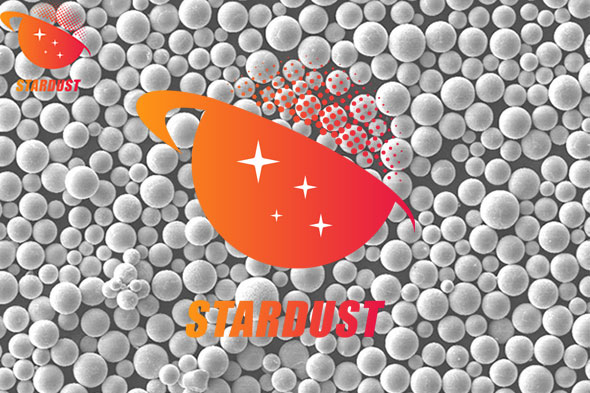
1 Introduction
Niobium metal, as a metal with low density among refractory metals, has high melting point, high high-temperature strength (highest specific strength in the range of 1093~1427C), good room temperature processing performance, weldability and corrosion resistance, and no radioactivity, which enables its alloy to be made into thin plates and parts with complex shapes, and used as thermal protection and structural materials in the aerospace and aviation industries. Since the 1900s, the research and development of high-temperature niobium alloys has made great progress, and has demonstrated its superiority over nickel-based alloys in the high-temperature field. Common ones include C-103 (Nb 10HF IT1-0.7Zt) alloy widely used in engine radiation cooling nozzle extensions, Nb-752 (Nb-10W-2.5Zr) alloy used for hypersonic aircraft skins and wing leading edges, and FS85 (Nb-2STa-10W-1Zr) alloy used in the nozzle of the orbital maneuvering system of the space shuttle. As one of the important raw materials used in aerospace, the alloy preparation, plastic processing and high-temperature oxidation-resistant coating of high-temperature niobium alloy have been the research hotspots in recent years.
2 Strengthening methods of niobium alloys
Similar to most metals, alloying is also the main strengthening method of niobium alloys. The main strengthening paths are solid solution strengthening, precipitation strengthening and dispersion strengthening "7. At present, the strengthening elements in niobium alloys include refractory metals W, Mo, Ta, Ti, Zr, Hf, etc. These elements can play a role in solid solution strengthening of niobium, and other elements such as C, N, and O also play a role in strengthening niobium in other ways. As active metal elements, Ti, Zr, and Hf can not only improve the oxidation resistance and molten alkali metal corrosion resistance of alloys, but also form other strengthening methods with interstitial elements. For example, Hf and C in Nb-22W-2HfC alloy can form HfC to precipitate. Strengthening effect, ZrO in Nb-1Zr alloy plays a role of dispersion strengthening. Adding appropriate W and Mo can improve the high temperature strength and room temperature strength of alloy, and improve the creep resistance of the material, such as NbW5-1 (Nb-5W-2Mo-1Zr-0.1C) and NbW5-2 (Nb-5IW-2Mo-1.7Zr) alloy developed in recent years. Compared with C-103 alloy, NbW5 series alloys not only reduce manufacturing costs, but also increase the working temperature after surface coating. It is worth noting that too high W and Mo content will reduce the processing performance of alloy, such as weldability and plasticity, making it difficult to process. Ta It is a medium strengthening element and can form an infinite solid solution with the niobium matrix, but the strengthening effect will be obvious only when the content exceeds 10%, such as FS-85 alloy.
Since niobium alloys are usually used at temperatures exceeding 1000℃ after adding protective coatings, high-temperature niobium alloys can be divided into three categories according to the high-temperature strength. Low-strength niobium alloys are mainly C-103, KB-1 and Cb33; medium-strength niobium alloys are FS-85, D43 and Nb752; high-strength niobium alloys are WC3009, FS-48 and FS-50. Currently, low- and medium-strength niobium alloys are widely used.
3 Preparation of niobium alloys
In industry, crude niobium is mainly prepared by aluminothermic or carbon thermal reduction of niobium oxide. In production, crude niobium is generally prepared by indirect carbide reduction. However, the impurity content of crude niobium is high, so it is necessary to use multiple electron beam melting for purification. "Ingots can be prepared by powder metallurgy and vacuum melting. It is easy to obtain alloy materials with uniform composition by powder metallurgy, but due to the high content of impurity elements, the material is hard and brittle, and the plasticity is poor. Electron beam melting is mostly used for ingot preparation in production. The flexibility of modern electron beam furnaces and the controllability of electron beams allow the use of raw materials in various forms: sponge, pressed powder, block chips, sintered strips, etc. However, after electron beam melting, the volatilization loss of metal elements with a saturated vapor pressure higher than niobium is relatively large, such as the common strengthening elements Ti and Zr. Therefore, in order to produce high-purity and uniform-composition Taijin ingots, it is usually necessary to adjust the composition, and vacuum arc melting can make the content of these elements reach the nominal composition requirements of the alloy.
For the processing of niobium Taijin, extrusion, forging, rolling, drawing, stamping, spinning and other methods are usually used to produce rods, wires, plates, strips, foils, tubes and special-shaped parts. Since interstitial element oxygen is very easy to react with niobium at high temperatures, niobium Taijin must adopt metal sheathing, coating or inert gas protection heating during hot working.
4 Protection of niobium alloys
Niobium alloys have poor oxidation resistance in high temperature environments, and protective measures must be taken when used. The improvement methods are usually alloying and surface coating. Although alloying can improve the high-temperature oxidation resistance of niobium, when the added silicide elements exceed the critical amount, it will have a negative effect on the mechanical properties of the silicide; and if the added elements are insufficient, the protective effect on the niobium matrix is poor. Therefore, surface coating protection is an effective way to take into account both the high-temperature mechanical properties and oxidation resistance of niobium alloys. At present, protective coatings can be roughly summarized into the following three types: intermetallic compound coatings, plastic anti-oxidation alloy coatings, and composite protective coatings6.
The most widely used silicide coatings are General Electric's LB-2 (88Al-10Cr-2Si) coating, VacHgd's Lunite-2, which is similar to the LB-2 process, and Sylvaria Electric Products Co., Ltd.'s silver-modified aluminide (AlSiAg) coating. At present, the development of silicide coatings is relatively complete and the application is the most extensive, such as the Cr-Ti-Si coating developed by TRW. Compared with aluminide coating, silicide coating has superior oxidation resistance and good thermal stability. The operating temperature can reach 1000℃. The SiO2 formed on its surface is fluid at high temperature, which makes the coating self-healing and able to withstand a certain amount of deformation.
Plastic oxidation-resistant alloy coating is mainly made of heat-resistant alloys based on iron, nickel and chromium and precious metals, but its bonding strength with the substrate is poor and the operating temperature is also low. It has been reported that oxidation-resistant niobium alloy can be used as the base layer, and a composite protective coating with good oxidation resistance can be added on it. Most of them use MoSi2 as the base layer and ceramic glass as the surface layer. Because the expansion coefficient of MoSi2 is close to that of niobium alloy, its oxidation resistance is also better than NbSi2. The ceramic glass layer on the surface can seal defects such as microcracks. The test shows that the effect is obvious. The protective layer made of LM-5 (40Mo-40Si8Cr-10Al-2B) has a more obvious effect.
5 Conclusion
With the development of high thrust-to-weight ratio rockets, the aerospace industry has increasingly stringent requirements on the performance and use environment of high-temperature niobium alloy materials. It is necessary not only to reduce the density of niobium alloy structural parts, but also to improve their high-temperature strength and high-temperature oxidation resistance. Therefore, the future research directions can be summarized as follows: (1) Make full use of alloying to design new high-strength niobium alloys that can withstand higher temperatures, such as the niobium-silicon intermetallic compound-based ultra-high temperature structural materials developed in recent years; (2) Optimize the preparation and processing technology of niobium alloys, develop the preparation technology of large-size low-density niobium alloys for aerospace, and obtain niobium alloy structural parts with better performance, reliability, stability and economy; (3) Improve the preparation process of commonly used coatings, improve their comprehensive performance, and increase research on composite coating systems.
Paper citation information:
Shandong Industrial Technology
DOI:10.10040/icnki.37-1222/t.2010.20.025
The following is the spherical Nb21 alloy powder produced by Stardust Technology using radio frequency plasma spheroidization technology.
High-purity Nb521 has the following advantages:
Better mechanical properties: Fewer impurity elements mean that the material is more stable under high temperature and high pressure conditions, and has stronger strength and ductility.
Improved corrosion resistance: Low oxygen content reduces the formation of oxides, thereby improving the corrosion resistance of the alloy in extreme environments.
Thermal stability: High-purity materials can maintain good stability at high temperatures and are not prone to phase change or degradation.
High-purity Nb521 alloys are often used in high-tech fields that require high performance and reliability, such as aerospace, nuclear energy, chemical and electronics industries.
https://www.stardustpowder.com/niobium-tungsten-alloy53-150mm

For more information on powder performance, please contact Vicky at +86-13318326185
